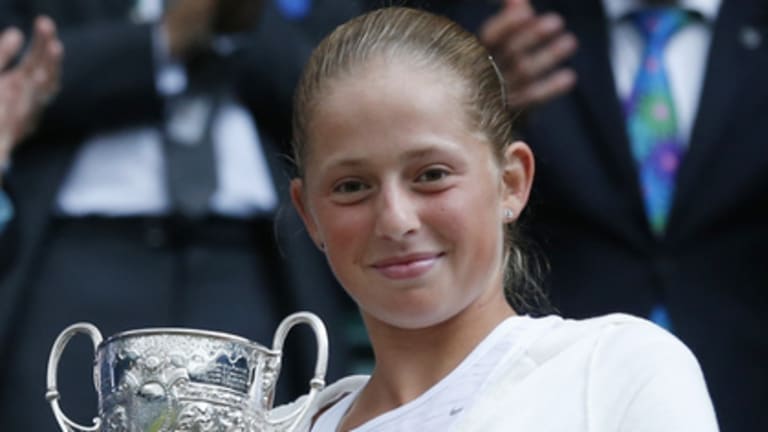Ernests Gulbis—world No. 68, owner of the ATP’s most unique forehand, and a 2014 French Open semifinalist—has been the most recognizable Latvian player in the world for some time. But closing in on Gulbis’ throne as the best Latvian player in the world is an 18-year-old from Riga by the name of Jelena Ostapenko.
The teenager broke into the Top 100 this week for the first time after reaching her first WTA final in Quebec City. In her previous tournament, the U.S. Open, she shot through qualifying, won a round in the main draw, and bageled Sara Errani at the start of their second-round match before eventually falling, 0-6, 6-4, 6-3.
The 2015 season has been a breakthrough of all kinds for Ostapenko, who last year won the girls’ Wimbledon title and was ranked No. 2 in juniors. In February, she won her first $50,000 ITF tournament in Russia as a qualifier. With a wild card at Wimbledon, she notched her first Top 10 win by annihilating Carla Suarez Navarro, 6-2, 6-0.
It’s all quite impressive for someone who carries her schoolbooks along with her racquet bag. Still a high school student, Ostapenko hopes to finish her studies in the next year. But instead of doing so online, she heads back to the classroom when she’s at home in Latvia to take tests. Not surprisingly, before turning pro, American college coaches were knocking at her door.
“I had so many offers but I don’t really want it,” Ostapenko says. “I want to play professionally. When I finish, maybe I’ll go [to college]. But I think I still have a chance to play professionally. If I go to college I miss like four years, and then it’s going to be difficult to come back.”
Ostapenko began playing as a five-year-old in Riga because her mother, also named Jelena, was a tennis coach. “When I was a kid I was with my mom always at the tennis club. And she didn’t say that I have to play tennis, I just liked it,” recalls Ostapenko. “I went by myself to play against the wall, and that’s how I started.”
